#neo Versailles
Explore tagged Tumblr posts
Text
#le visiteur du futur#vdf#je me lance dans les sondages#visiteur du futur#neo versailles#la meute#le visiteur du futur le film#les missionnaires#françois descraques
32 notes
·
View notes
Text
- Elle est où Judith ?
- il est pas au courant !




#le visiteur du futur#visiteur du futur#Vdf#Judith#Judith vdf#matteo#matteo vdf#raph#Raph vdf#Elle est où Judith#Screenshot#Neo versailles#Vdf s4#vdf spoilers#Visiteur du futur s4#Pain#Mine
32 notes
·
View notes
Text






Customisation d'un vieux gilet.
1 note
·
View note
Text
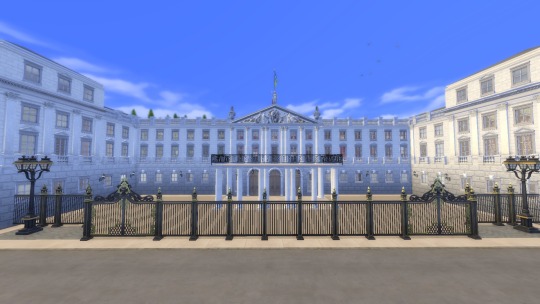


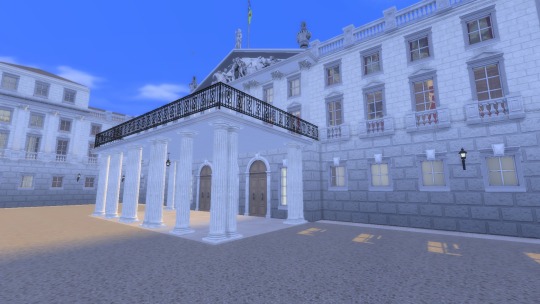

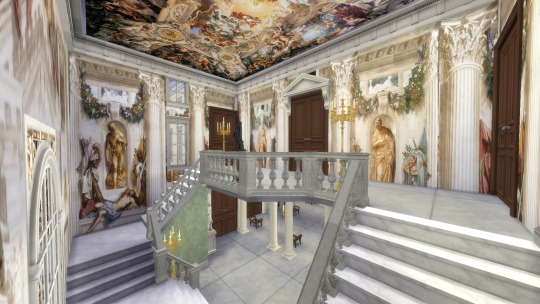
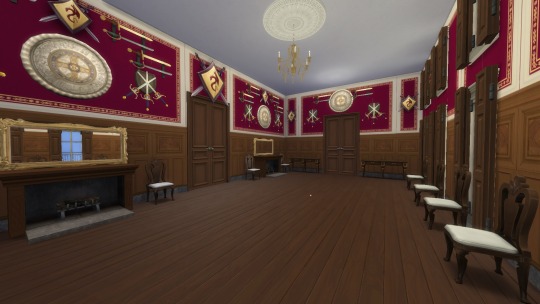
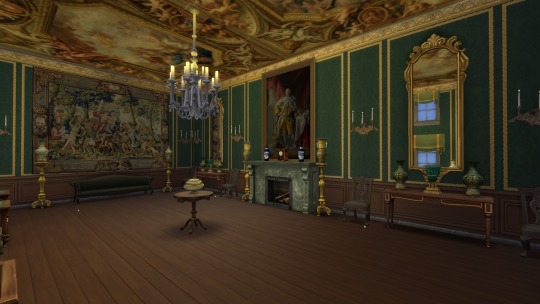
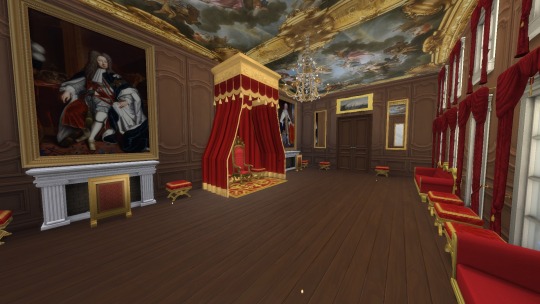


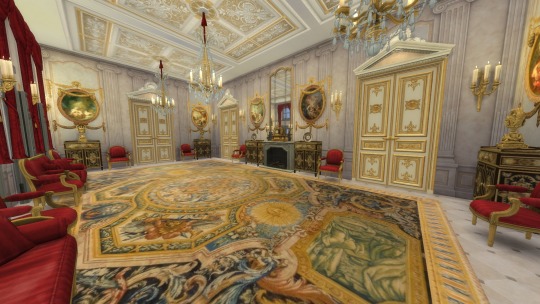
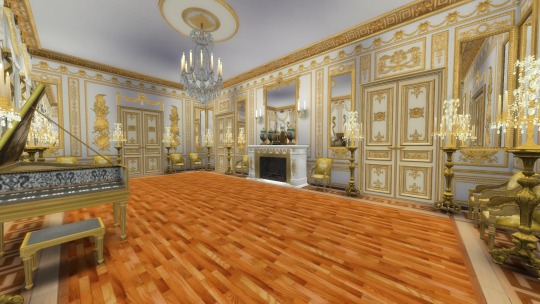

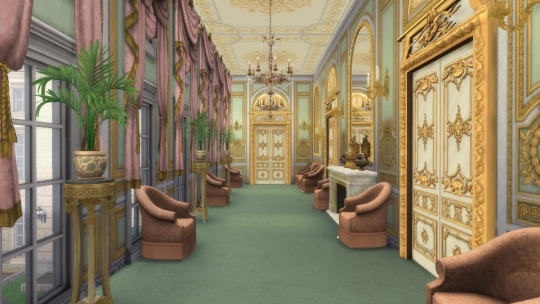
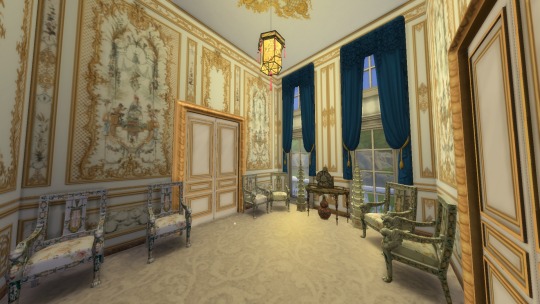
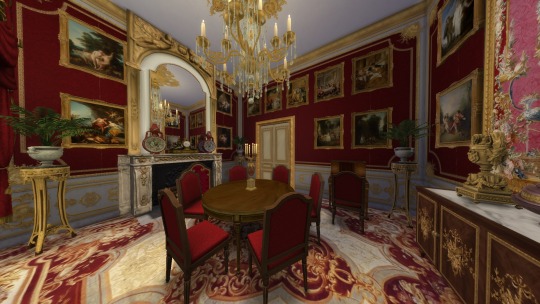


In 1809, a catastrophic fire ripped through the hodge-podge St.James's Palace in London, England. St.James's had become the place of the Royal Court of the Sovereign of the United Kingdom, though even by the time of the fire it wasn't the preferred residence of the Sovereign (this honor went to Buckingham House while the Prince of Wales held a counter court at Carlton House).
But what if St.James's burnt to the ground, save a garden wall? Buckingham House, at the time, was too small, Kensington too far away and now there was a prime place to develop something grand enough befitting the Crown.
Enter New St.James's Palace - based off a design earlier drawn up for Richmond by William Chambers, it would be adapted and expanded to become fit for purpose. Cleveland Row would be partially cleared to create a proper French styled entrance court, while many items and decorative items from Carlton House and Windsor Castle would be used to try and curtail costs.
This is all a bit of non-serious fun, and it was quite enjoyable to shove the boring George III's staterooms with the more interesting, classical Queen Charlotte's and the over the top Prince of Wales' chambers into one building.
As always, a big thanks to all the CC creators @stereo-91 @strangestorytellersims @chateausims @felixandresims @syboubou @itskingfalcon @thejim07 @the-regal-sim Mutske on TSR @artyssims @aggressivekitty @cliffou29 @themarblemortal
(if I have forgotten anyone, let me know!)
#ts4#the sims#the sims 4#ts4cc#ts4 cc#ts4 build#ts4 royal#the sims 4 royalty#ts4 palace#neo classical#palladian#georgian#regency#versaillespalace#Versailles#buckingham palace
30 notes
·
View notes
Text
List of Year 24 complete manga work in English or Italian
I made this list mainly to myself, but you can easily use it too. I am on a mission to read every Year 24 group manga available, so here I collected:
licensed manga (in English and Italian)
online scans
Every licensed manga has a the name of the publisher too, and you might find the Italian translation easier than the Japanese.
I added an "online" to the ones you can definitely find scanned online. Every title is linked to where to read the story nearby, keep in mind these websites come and go and might have ads.
If you see a licensed title in italics it means that the manga cannot be found anywhere online and scanned (and translated). Or that some short stories in the collection (if it is a collection) cannot be found anywhere online and scanned.

Let's start!
The authors are (in order): Moto Hagio, Keiko Takemiya, Riyoko Ikeda, Ryoko Yamagishi, Yasuko Aoike, Yumiko Ooshima, Minori Kimura, Kihara Toshie.
MOTO HAGIO
Licensed in English
They Were 11! (JP Oversized and Viz)
The Complete Poe Clan (Fantagraphics, coming out November 2024)
Heart of Thomas (Fantagraphics)
A Drunken dream and other stories (Fantagraphics)
Neo Parasyte m (Kodansha Comics; first chapter is by Moto Hagio)
Lil' Leo (Denpa books)
Otherworld Barbara volume 1 and 2 (Fantagraphics)
A,A' (Viz), impossible to find it seems
Licensed in Italian
Il cuore di Thomas - The heart of Thomas (J-POP)
A Cruel God Reigns, 9 volumes (J-POP)
Star Red (J-POP)
Hanshin, la dea dimezzata, collection of stories (J-POP) (anilist)
Il Clan dei Poe volume 1 and 2 (J-POP)
Barbara, vol1, 2 and 3 (J-POP)
Marginal vol1, 2 and 3 (J-POP)
Online (English only) (chronological order)
-> Full series
The Heart of Thomas (manganelo)
They were 11 (mangadex)
They were 11: Higashi no Chihei, Nishi no Towa (mangadex)
U wa Uchuusen no U (collection of stories) (mangadex)
Silver Triangle (mangadex)
A, A' (mangadex)
Marginal (mangadex)
A cruel god reigns (mangadex)
-> One shots
Bianca (mangadex)
Girl on the porch with puppy (internet archive)
Poor mama (mangadex)
Autumn Journey (internet archive)
11-gatsu no Gymnasium (mangadex)
Unicorn no Yume (mangadex)
Onshitsu (mangadex)
Marie, ten years later (internet archive)
Cabagge Hata no Isansouzokunin (mangadex)
Houmonsha, prequel of Heart of Thomas (mangadex)
Shiro - The Castle (mangadex)
A Drunken Dream (internet archive)
Ragini (mangadex)
Kinyou no Yoru no Shuukai (mangadex)
Kimi Wa Utsukushii Hitomi (mangadex)
Hanshin: Half-God (mangadex)
Egg stand (mangadex)
Angel Mimic (internet archive)
The child who comes home (internet archive)
Slow Down (mangadex)
The false king (mangadex)
Iguana girl (mangadex)
Afternoon sunshine (mangadex)
Yuujin K (mangadex)
Yama e Iku - Going to the mountains (mangadex)
The Willow Tree (mangadex)
Moments of lonliness (mangadex)
With Love to "From Eroica with love" (mangadex)
Neo Parasyte m's short story "Yura no Mon wo" (mangaplaza, first story, which is the free one)
KEIKO TAKEMIYA
Licensed in English
To Terra, 3 volumes (Vertical Inc)
Andromeda stories, 3 volumes (Vertical Inc)
Licensed in Italian
Il poema del vento e degli alberi - Kaze to Ki no Uta, 10 volumes (J-POP)
Verso la Terra - To terra, 3 volumes (J-POP)
Il suo nome era Gilbert, autobiographical novel (J-POP)
Online (English only) (chronological order)
-> Full series
Kaze to Ki no Uta (mangadex)
To Terra (mangadex)
Andromeda Stories (mangadex)
Rintarou Panic! (mangadex)
-> One shots
Sunroom Nite (mangadex)
Hohoemu Shounen (mangadex)
On a snowy day (mangadex)
Star (mangadex)
20 no Hiru to Yoru (mangadex)
Mister no kokori (mangadex)
Natsu e no Tobira (mangadex)
Manatsu no Yoru no Yume (mangadex)
Koufuku no Hato (mangadex)
Toki wo Yuku Uma (mangadex)
RIYOKO IKEDA
Licensed in English
Claudine (Seven Seas)
The Rose of Versailles, 5 volumes (Udon Entertainment)
Licensed in Italian
Le rose di Versailles, 5 volumes (Edizioni BD)
La finestra di Orfeo - Orpheus no Mado, 9 volumes (J-POP)
Anello dei Nibelunghi - Nibelungen no Yubiwa, 4 volumes (Goen)
Claudine (Goen)
Ayako, 2 volumes (Goen)
Caro Fratello - Dearest Brother, 2 volumes (Goen)
Elisabetta - Elizabeth (Yamato)
Eroica la Gloria di Napoleone - Héroïque The Glory of Napoleon, 12 volumes (Magic Press)
Online (English only)
Bara Yashiki no Shoujo (mangadex)
Early Spring Trembling (mangadex)
Porando Hishi Ten no Hate Made (mangadex)
Dearest Brother (mangadex)
Nibelungen no Yubiwa (only 3 volumes, 1 missing, mangadex)
Claudine (mangadex)
Versailles no Bara (up till volume 12, mangadex)
Summer in Cantenbury (mangadex)
RYOKO YAMAGISHI
Online (English only)
Shiroi Heya no Furari (mangadex)
Yasha Gozen (mangadex)
Harpy, collection of stories (mangadex)
Hatshepsut (mangadex)
Hiruko (mangadex)
Medusa (mangadex)
Hemi no Hire (mangadex)
YASUKO AOIKE
Licensed in English
From Eroica with Love (Cmx, unfinished)
Online (English only)
From Eroica with Love (still being translated, currently at chapter 21 (mangadex)
Vampire (mangadex)
The free shooter (mangadex)
Tasogare ni Kaere (mangadex)
Z (mangadex)
YUMIKO OOSHIMA
Online (English only) (chronological order)
No longer male (mangadex)
To Joker (mangadex)
Banana Bread no Pudding (mangadex)
Grass Crown Princess (mangadex)
He His Him (mangadex)
Across a golden prarie (mangadex)
Summertime (mangadex)
Long long cafe (mangadex)
MINORI KIMURA
Online (English only) (chronological order)
Ame (short stories) (mangadex)
Warped mirror (mandagex)
KIHARA TOSHIE
Online (English only) (chronological order)
I'm fine with dying (mangadex)
Diamond Gojiran, 3 one shots (mangadex)
With love to "From Eroica with love" (mangadex)
NANAE SASAYA
none
MINEKO YAMADA
none
#year 24 group#moto hagio#keiko takemiya#riyoko ikeda#kaze to ki no uta#kihara toshie#minori kimura#yumiko ooshima#yasuko aoike#ryoko yamagishi#love#mine#manga#shojo manga#takemiya keiko
50 notes
·
View notes
Text

Intrepid Adventurers of the Sibylla Academy!! Wanted to make some gift art for my fellow campaign members and draw their lovely charas! (And this isn't even everyone in the campaign haha)
Featuring: Ola Eurig @jackzarts, Neo Nightdwell @alyxnoctis, Lia Hemlock and Lee Shadeling (twins), Versailles @punkforkos, Xy Lee @erisperitas
#my art#kara oc#oc versailles#party: sibylla academy#dnd oc#dnd#dungeons and dragons#digital art#illustration#dnd party#tiefling#changeling#air genasi#eladrin#artists on tumblr#dnd character#fantasy art#original character#gift art#chibi#chibi art
41 notes
·
View notes
Text
Ahm...visual kei fans a question for science, cause why not. If all your favorites were to star in a movie, would you watch it? Also if it was put on sth like kickstarter, would you support it. Wild scenario but still, ye know...hypothetically speaking.
In case you're wondering about which bands I was thinking I am talking both active and disbanded bands. Not a musical, but it would have some music in it. I'm talking bands from the 90s, all up until now. Bands like Malice Mizer, Versailles, D, Lareine, you know the artistocratic type ones and others like the Gazette, Screw, Born, Alice Nine, Diaura, SuG, DOG inThePWO, 9Goats Black Out, Vistlip, Kaya, Hyde, etc. Oh and they all get to keep their band theme.
Also I'm not talking about a movie like bands against bands, I'm talking intricate dark fantasy plot, plot twists, lore and all.
I know it sounds specific but again, just hypothetically speaking. Take it as a silly question of the day. (i'm curious about all gens fans opinions btw, so, old school, neo visual kei and however we call the current state of the scene.)
#visual kei#the gazette#screw#versailles#sukekiyo#dir en grey#malice mizer#sug#dog inthepwo#diaura#lareine#and eccentric agent#vkei#kamijo#hyde#mana#közi#vistlip#alice nine#kaya#9goats black out
56 notes
·
View notes
Text
NOBLESSE OBSCURA | Long Live The Memory Leak ⚔️👑💀 | Ep. 7
The final hours of Neo-Versailles: watch quantum aristocracy crash into digital oblivion. Chrome-plated power meets revolutionary bass 💀
Synthetic nobles running failed emergency protocols while holographic palace burns. Pearl-white royal androids glitching in corrupted halls. Revolutionary phonk destroys last imperial firewalls. The system wasn't ready for its own evolution. ⚔️
5 notes
·
View notes
Text
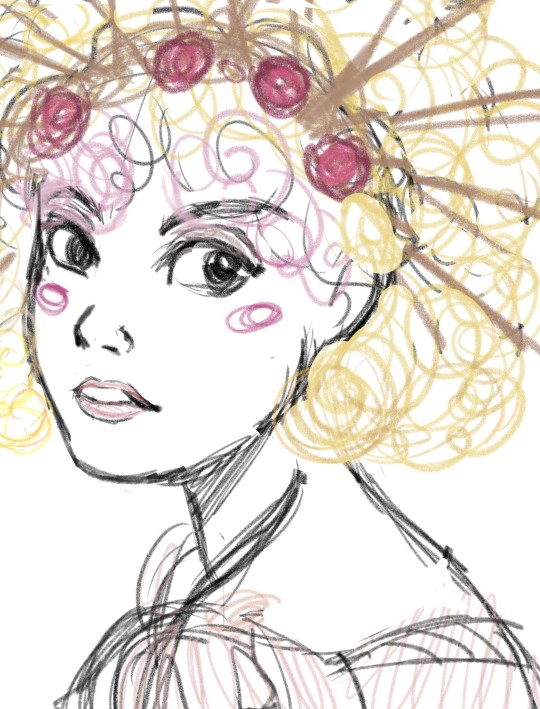

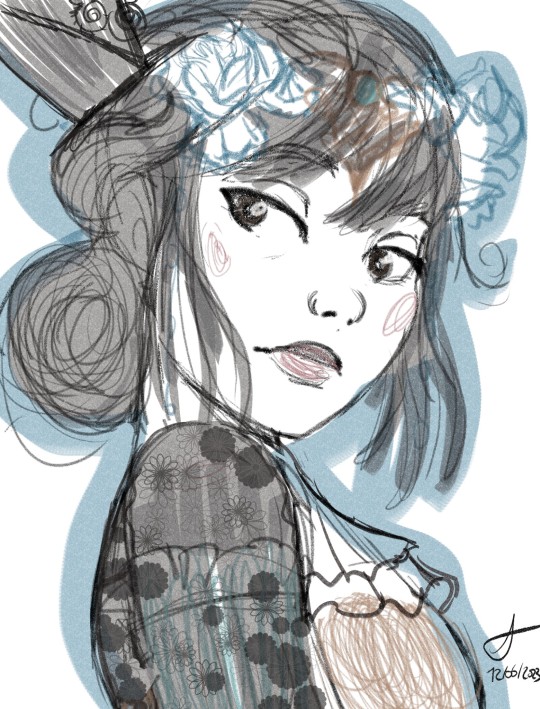
Les reines de Neo-Versailles et la baronne
#le visiteur du futur#le visiteur du futur fanart#vdf#néo versailles#la baronne#clothilde iv#stella leroy
40 notes
·
View notes
Text
Hello, I'm a new user. My first post is dedicated to the memory and memorial uses of the Paris Commune, from 1871 until the First World War.
"On ne peut pas tuer l'idée à coup de canon, ni lui mettre les poucettes", said Louise Michel in La Commune et ses souvenirs.
Published in 1898, La Commune et ses souvenirs is one of Louise Michel's last works. It can be said that her pen resurrects the Paris Commune of 1871. Her autobiographical work begins with this: "Writing this book is reliving the terrible days when freedom, brushing us with its wing, flew away to the slaughterhouse; it is reopening the bloody pit where, under the tragic dome of the fire, the beautiful Commune fell asleep for its wedding with death, the red wedding of martyrdom." She concludes that the repression of Bloody Week by the Versailles army can only fuel the coming revolt in spite of itself.
153 years separate us from these 72 days of 1871, during which Paris was the scene of a workers' insurrection that became emblematic for the national revolutionary movement. The time of forgetting has never imposed itself, and the fragments of this insurrection continue to be explored. These 72 days of hope, struggles, pain, joys, sacrifices, heroism, always fuel reflections, analyses, controversies. To study the social struggle of the Communards in 2024, it is a question of occupying the space of memory. Memory is a vital issue in the class struggle throughout History. Concerning the Paris Commune, the "Versaillais" of 1871, whether they were reactionaries and legitimists or moderate republicans (starting with Thiers!), immediately began their memorial work, developing a vision of the facts in accordance with their class interests. They want to erase from the collective memory any positive trace of the Commune.
There are three main components of the Paris Commune:
The Jacobins or "neo-Jacobins" are the most numerous. In this movement, we find in particular Charles Delescluze, veteran of the revolution of the Three Glorious Days and then of the revolution of 1848. Although their references are the Paris Commune of the French Revolution, and the Constitution of the year I granting many freedoms to local authorities, the Jacobins remain less centralist than the terminology used suggests. Among the neo-Jacobins we find journalists, artisans, artists, liberal professions, lawyers. They form more than a third of the members of the Commune. The Blanquists, in the absence of Blanqui, imprisoned in the provinces by the Thiers government since March 17, 1871, only bring together a small minority of Communards. They advocate authoritarian socialism and are in favour of a dictatorship in the name of the people. They are also inspired by the policy of 1793. This orientation will be manifested in the choice of investments within the Commune. The Blanquists conceive of communalism as being the free federation of producers, a thesis later taken up by the Jura federation. The main figures of the Blanquist movement are Emile Eudes, Emile Duval, Théophile Ferré, Raoul Rigault, Edouard Vaillant, and Frédéric Cournet.
There are "unclassifiable" characters, such as Gustave Flourens, Gustave Courbet, Auguste Vermorel who perished on a barricade, Jules Vallès (a must-read!). The confrontation of these forces during the 72 days that the struggle will last will highlight the specific political content and the real divergences will appear at the heart of the action, independently of the unity forged against the Versailles enemy, a unity that will not be denied when tested by the barricades of the Bloody Week.
On March 28th 1871, after the electoral vote, the Central Committee of the Federates of the National Guard proclaimed the Commune and handed over its powers. The Assembly was divided into a majority revolutionary bloc bringing together elected representatives from workers' societies, the Central Committee, the International, the Blanquists, or the Jacobins. There were 25 workers, coming from the world of crafts and not from large-scale industry. The other members were employees, teachers, journalists, and lawyers.
In 1880, Maxime Lisbonne, nicknamed "The d'Artagnan of the Commune", opened a "penal tavern", in reference to the penal colony of New Caledonia. The former director of the Folies Saint-Antoine under the Second Empire became captain of the National Guard during the siege of Paris, then colonel under the Commune, before fighting on various barricades during the Bloody Week (from May 21 to 28, 1871). On the walls of his tavern were hung paintings depicting the federates killed during the Commune, scenes from the penal colony. The penal colony tavern stirred up Paris, the good society that wanted to have a little fun did not disdain to associate with the former communards who frequented this place. However, the decor of the tavern clearly retraced the story of 1871 and the Bloody Week. The Père-Lachaise cemetery is the main place of remembrance of the Paris Commune. From 1880, people began to go in May to the "wall" and the mass grave of the federates. Henri Rochefort launched a memorial campaign in L'Intransigeant (a newspaper he created), for a "monument to the fighters of 1871", and the idea was revived a few years later, when the prefecture wanted to sell the land by private concessions. The erection of a monument was prohibited until 1908. The annual pilgrimage continued, focusing the memory of the Commune on Bloody Week. In 1908, in his Red Notebooks, Maxime Vuillaume, who had founded the newspaper Le Père Duchêne in 1871 with Alphonse Humbert and Eugène Vermersch, recounted how, after attending the funeral of “an old comrade,” he went with his friends to the “Wall.” He described: “A façade of red crowns, faded, dried out, with ribbons torn by the rain and wind,” “To the dead of 1871. Anniversary of Bloody Week. To the victims of the great massacre” (words taken up by historian Laure Godineau). Another source of inspiration for his Red Notebooks: Maxime Vuillaume went to rue Haxo, where fifty hostages were shot on May 26, 1871.
The macabre count of the Bloody Week mobilized the energy of the first writers of the Communard memory, as opposed to the reactionary memory of Versailles. Faced with the Versailles people who tried to erase all traces of the massacre of the insurgents, whose stories evaded the question of the number of summary executions during the Battle of Paris and staged their own martyrs, the vanquished tried to exhibit the intensity of the repression of May. Thus, Lissagaray counted 20,000 dead, Benoît Malon counted 25,000, Georges Jeanneret counted 30,000, and 40,000 according to Pierre Vesnier.
Consequently, throughout France, a "clandestine" memory was forged and expressed, having fun with censorship, notably in republican banquets. The opposition to the Moral Order and its inclinations towards monarchist restoration, associated Commune and Republic on the side of the radical republicans, with a particular intensity in the "Red South" (the socialist strongholds of the south of France) where the Commune was strongly associated with a democratic and social republic; moreover, the proclaimed federalism of the insurrection was praised there. These commemorations, in secret, took place in March and not in May, so as not to recall the mourning of the Bloody Week, but to celebrate the victory of March, and also to respond to the symbolic offensive of the Versaillais who, for expiatory purposes, insisted on the death of Generals Lecomte and Thomas on March 18, 1871.
In Paris, at the end of the 19th century, it proves to be at least difficult to celebrate the memory of the Commune, or at least to reject the memory of Versailles. Yet this memory is written on the walls, as these inscriptions testify: "Long live the Commune! Honour to the brave Ferré, Rossel, Crémieux and Dombrovski who died for the Commune".
For my first Tumblr post, I ask myself the following question, as a young man passionate (in both senses of the word, you will understand why) about the Commune and its memory: How was the memory of the Commune forged ?
From June 1871, Karl Marx wrote (in London) The Civil War in France. Marx considered that the insurrection was premature, provoked by an exceptional political context, and that a compromise could have been found, in order to avoid a bloody repression. In his text, he expressed his criticisms against Thiers, against the assembly elected on February 18, 1871, and against the Versaillais. According to Marx, the Commune was mainly a government of the working class, the result of the class struggle, the political form finally found which made it possible to achieve the economic emancipation of labor. Marx ends his work with these words: "Working-class Paris, with its Commune, will be celebrated forever as the glorious harbinger of a new society. The memory of the martyrs is piously preserved in the great heart of the working class. Its examiners, history has already nailed them to an eternal pillory, and all the prayers of their priests will not succeed in freeing them from it."
Propser-Oliver Lissagaray can be considered as the first historian of the Commune. During the Commune, he was a journalist at L’Action and then at the Tribun du Peuple. After the Bloody Week, he went into exile in Belgium and then in England. In Brussels, he published his works: Les Huit Journées de mai derrière les barricades and Histoire de la Commune de 1871. This is a testimony on the Commune, a history based on the stories that Lissagaray collected from his “comrades”, the reestablishment of a truth. He clearly accuses “Versailles” of having precipitated the explosion, of refusing any element of pacification at the beginning and any attempt at conciliation afterwards, of having provoked the spiral of violence, and of having been extremely violent in the repression. In 1872, thanks to him, the Social Studies Circle of London decided to respond to the accusations of the parliamentary inquiry into the insurrection of March 18. Lissagaray sees the Commune's military wait-and-see attitude in March as evidence of weakness, as does the Commune's refusal to seize the gold of the Bank of France, echoing the analysis of Gustave Lefrançais, as well as that of Karl Marx in The Civil War in France.
The first proposals for amnesty were put forward in 1872 by Henri Brisson and Edmond de Pressensé, who nevertheless condemned the insurrection. These proposals were rejected. In 1876, Georges Clemenceau (deputy) and Victor Hugo (senator) addressed the question of the responsibilities of the Assembly of Versailles in the outbreak of the insurrection, and those of Jules Dufaure's government in the escalation of violence and the impossibility of finding a compromise. In this context, the harsh treatment suffered by the Communards in New Caledonia was mentioned. After 1876, as the Republic (Third Republic, "illegitimate republic") asserted itself, and as "socialist" groups expressed themselves more openly, debates and interventions on amnesty multiplied, in the chambers, in the press, through petitions. A new amnesty law was proposed by Louis Blanc in 1877.
Let us note that the brilliant career of Louise Michel, Edouard Vaillant, Elisée Reclus, Emile Eudes, Benoît Malon, Jean Allemane, Zéphirin Camélinat, and so many others, should not make us forget the fact that most of those amnestied returned to the anonymity of their previous career, emphasizing the extent to which the Commune was an "impromptu revolution, partly led by men with no militant experience" (Eric Fournier). In addition, among the 49 elected officials of the Commune, less than half had any visible political activity in the 1880s. I present the political activity of the few Communards mentioned (after the amnesty): After her return from New Caledonia, Louise Michel gave hundreds of conferences. In 1881, she went to Blanqui's funeral, then attended the International Anarchist Congress in London. A long period of activism followed, which I will discuss in a future post. On May 21, 1871, Edouard Vaillant, the Commune’s delegate for education, managed to escape to London, where he sat on the General Council of the First International. In 1872, the Versailles war council sentenced him to death. He then met Marx and began to be influenced by Marxism. In 1880, back in Paris, he founded with Auguste Blanqui (a year before the latter’s death) the newspaper Ni Dieu ni Maître, a reference for the anarchist movement. In 1884, he was elected municipal councilor, then deputy for the 20th arrondissement from 1889 until his death in 1915. Elisée Reclus, a geographer and communard supported by the scientific community (including Darwin), escaped deportation to New Caledonia, but was sentenced to ten years of banishment. He took refuge with his brother in Switzerland, then in Belgium. After Bakunin's death in 1876, Elisée Reclus ensured the vitality and visibility of anarchist thought. I quote his main testimonies: "My role during the Commune was officially null, I found myself in the anonymous crowd of fighters and the vanquished", "I traveled the world as a free man, I contemplated the world with a gaze that was both candid and proud". Benoît Malon took refuge in Switzerland. In November 1871, he participated in the Sonvilier Congress, and joined the Jura Federation, alongside Bakunin, James Guillaume, Adhémar Schwitzguébel, Errico Malatesta, Elisée Reclus. The Blanquist Emile Eudes founded the association "Ni Dieu ni Maître" in 1879, and joined the League for the Abolition of the Standing Army.
Benoît Malon took refuge in Switzerland. In November 1871, he took part in the Sonvilier Congress and joined the Jura Federation, alongside Bakounine, James Guillaume, Adhémar Schwitzguébel, Errico Malatesta and Elisée Reclus. He published The Third Defeat of the French Proletariat; according to him, the Commune was the third revolution of the 19th century, after the Canuts revolt and the crushing of the Revolution of 1848.
The Paris Commune constituted for the anarchists the first truly socialist and proletarian revolution, as a fight against the authority of the State, the Church, the army, and capitalism, and they recognized themselves in federalism, direct democracy, atheism. Among them, we find Louise Michel, Gustave Lefrançais, Elisée Reclus, Jean-Louis Pindy, Eugène Varlin. (I will present these characters in detail in a future post).
In his brilliant work The Paris Commune and the Notion of the State, published after his death by Elisée Reclus, Bakunin analyses the Commune as "a bold, well-pronounced negation of the State", and that Paris had dealt "a mortal blow to the political traditions of bourgeois radicalism". Thus, he analyses the Commune as the first revolutionary manifestation of anti-state socialism, the foundations of anarchism. Bakunin also explained why the Communards failed. If the Commune was not able to develop a radical program, this could be explained by the relatively negligible number of socialists, who had to wage a double war against the Prussians and the Versailles, in addition to a struggle against the Jacobins. Bakunin sees in the martyrdom of the Commune an event capable of mobilizing, the memory of which must be maintained: "The Paris Commune which, for having been massacred, stifled in blood by the executioners of monarchical and clerical reaction, has only become more alive in the imagination and in the heart of the proletariat of Europe."
In April 1871, James Guillaume considered anti-statism as the major characteristic of the Commune. He recalled that the federalism of the Commune, inspired by Proudhon, represented above all the rejection of the Nation and the State. "There is no longer a State, no longer a central power superior to the groups and imposing its authority on them. There is only the collective force resulting from the federation of groups. The centralized and national State no longer existing, and the Communes enjoying the fullness of their independence, there is truly anarchy" (words quoted by Jacques Rougerie). After the Bloody Week, two Communards, Arthur Arnould and Gustave Lefrançais, proposed their vision of the Commune. Arthur Arnould, in his Popular and Parliamentary History of the Paris Commune, writes this: "On March 18, the people broke definitively with the old monarchical and Jacobin tradition, equally maddened by unity, equally intoxicated by the poisonous idea of a strong Power. On March 18, the people declared that it was necessary to escape the vicious circle, to cut the evil at the root, no longer change masters, but to cease having masters, and with an admirable vision of the truth, of the goal to be achieved, of the means that could lead there, it proclaimed the autonomy of the Commune and the federation of the communes." According to Gustave Lefrançais, the Commune did not only have the objective of decentralizing power, but of making power itself disappear. In his articles published in the early 1880s, Pierre Kropotkine, the leading theoretician of libertarian communism, put forward the idea that "under the name of the Paris Commune a new idea was born, destined to become the starting point of future revolutions", and that due to the circumstances "the Commune of 1871 could only be a first draft". Kropotkin believes that the Paris Commune would have become a real social revolution if it had not been crushed. However, Kropotkin also described its limitations. According to him, "Indecision reigned in people's minds, and the socialists themselves did not feel bold enough to embark on the demolition of individual property, not having a well-defined goal before them", "They sought to consolidate the Commune first by postponing the social revolution, while the only way to proceed was to consolidate the Commune by the social revolution! The same happened with the governmental principle. In proclaiming the free Commune, the people of Paris proclaimed an essentially anarchist principle; but, as at that time the anarchist idea had only weakly penetrated people's minds, they stopped halfway and, within the Commune, they still declared themselves in favor of the old authoritarian principle, by giving themselves a Council of the Commune, copied from the municipal Councils" (Pierre Kropotkine, The Paris Commune).
In 1874, the anti-authoritarian split in the International (founded two years earlier at the Congress of Saint-Imier) affirmed that the massacres of Bloody Week and the deportations to New Caledonia had made any conciliation between the bourgeoisie and the proletariat impossible.
Jean Grave, close to Kropotkin, journalist at La Révolte and Le Révolté, explained the link between the Commune and the aspirations for a social republic, and deplores in his memoirs the lack of revolutionary sense of the Central Committee of the National Guard.
From the 1890s, the generation of direct action or propaganda by the deed is borrowed from a certain imaginary of the Commune. The anarchist militants intend to avenge the Commune. In 1892, Ravachol leaves a pot filled with dynamite at the home of the investigating judge Benoît. He is executed after having pronounced "Long live Anarchy" and sung a song by Père Duchesne, very anticlerical. Ravachol's avengers pay homage both to the martyred comrade, and to the avengers of Gustave Flourens, a general who worked for La Marseillaise, killed in April 1871.
Now, let's go back in time, in order to retrace the significant moments, associated with the memory of the Commune... Evoking these historical facts in chronological order seems to me the most obvious (not necessarily the most relevant, and in this case it will be up to you to judge...)...
In 1879, an amnesty law was passed that pardoned 3,300 Communards, including Jean-Baptiste Clément, Nathalie Le Mel, Henri Brissac, Antoine Dumay, Eugène Dangers. The latter met in 1880 in an initiative committee (chaired by Jean-Baptiste Clément and Antoine Demay), forming the group of the Combatants of 1871. On July 13, 1880, on the eve of the first celebration of the "national holiday", these former Proscrits set themselves the goal of developing a revolutionary socialist program for the elections of 1881.
Léon Gambetta, president of the Assembly, had the plenary amnesty law for the Communards voted on July 11, 1880. Following this law, former Communards returned to French soil. Returning from New Caledonia, Louise Michel was acclaimed by 20,000 people; among the crowd, she was awaited by Louis Blanc, Henri Rochefort, but also Georges Clemenceau. In 1880, when the memory of Bloody Week prevailed over the hopes of March, the conditions were right for the wall to become a place of remembrance of the Commune. In May, the organizers, gathered around the newspapers L’Egalité and Le Prolétaire, decided that the commemoration of the 34,000 people shot in May 1871 would take place at the Mur des Fédérés. The red flag, defined as the official flag of the Commune on March 18, 1871, was unfurled. The police massacred the demonstrators. The “red immortelle” flowers landed on the mass grave. During the 1881 elections, nine former elected representatives of the Commune, including François Jourde, Emile Eudes, Jean Allemane, Félix Gaillard, Alphonse Humbert, Arthur Piéron, stood, but received very few votes. Clovis Hugues, who took part in the Marseille Commune in 1871, was the only socialist deputy elected. The conservative newspaper Le Temps states that "the Communard past is buried, the ghost of the Commune disappears, the revenants of the Commune must fade away". The electoral failure, associated with the divisions between socialists, puts an end to the association of the Combatants of 1871. Following this, the Solidarity of the Proscribed of 1871 was founded, initially bringing together the Blanquist Henry Champy, François Josselin, Jules Martelet, Olivier Pain.
In 1882, speeches were tolerated for the first time, and twenty speeches were given. I recall that within the socialist movement, the Federation of Socialist Workers of France was divided between the Marxists led by Jules Guesde who created the Workers' Party at the Congress of Saint-Etienne, and the Blanquists led by Edouard Vaillant who founded the Central Revolutionary Committee. The Workers' Party did not adopt the socialist political program of the Council of the Commune, except that Jean Allemane took a position for a "federative socialism", and that the Workers' Party was in favor of the "municipalization of public services". In the Society of the Proscribed, some conflicts arose. During a meeting, Piéron presented the program of the Workers' Party, advocating the mobilization of all workers' forces. Eugène Dangers proposed to reconstitute a central committee within the Solidarity of the Proscribed of 1871; he was therefore threatened with exclusion. Hippolyte Ferré, brother of Théophile Ferré, recalled that the Society of the Proscribed should not form an organized workers' or revolutionary party. Hippolyte Ferré proposed to bring together the Communards in a "group of social studies and revolutionary action. In 1889, Henry Champy constituted the Fraternal Society of Veterans of the Commune.
In 1883, the administration of the Père-Lachaise cemetery considered removing the insurgents' tomb. This decision aroused strong opposition from the Paris city council. Jules Joffrin, city councilor and member of the Workers' Party, obtained the abandonment of the project. Henri Rochefort, disliked by the former insurgents, proposed building a man for the republicans arbitrarily and savagely shot in 1871 for having defended the Republic "against the Prussians and the monarchists". The newspapers Le Prolétaire and La Bataille, then the mutual aid society of veterans of the Commune, relaunched the project of a commemorative monument at the foot of the wall. Eugène Pottier became the main promoter of the place of memory, notably through his propaganda works. He believed that the wall was enough to commemorate and glorify the Commune. This partisan valorization of the wall could accommodate the duty to forget, as well as reassure those who feared a monument exciting revolutionary groups. Consequently, the wall of the federates became a sanctuary. Encouraged by the poems of Eugène Pottier, and by the socialist and anarchist newspapers, more and more workers' activists went to the foot of the Wall (4000 in 1882, 5000 in 1883, 10000 in 1884).
Now, I'm going to present you the best songs dedicated to the memory of the Paris Commune.
Le Temps des Cerises (https://youtu.be/Zhum-7DDlNk). This song by Jean-Baptiste Clément is dedicated to an ambulance driver he met during the fighting on Rue de la Fontaine-au-Roi.
La Semaine sanglante (https://youtu.be/Zhum-7DDlNk). This tragic song evokes the last days of the Commune: Jean-Baptiste Clément drew on his own experience to write his lyrics, shortly after having witnessed the atrocities committed by the Versaillais against the Parisian people. His refrain nevertheless includes a note of hope, proclaiming that "the bad days will end!".
L’Internationale (https://youtu.be/Ykln5iQqw1E). This timeless anthem of the workers' movement was written by Eugène Pottier, probably in the weeks following the Paris Commune. The Internationale would not be published until many years later, before being set to music in 1888. This song, inspired by anarchism, was sung at the congresses of the Internationale. Taken up by the communists from 1917, and translated into Russian, it would then become the national anthem of the USSR until 1944. The Internationale is among the most translated political songs in the world, as a symbol of social struggle throughout the world.
Le Drapeau Rouge (https://youtu.be/ESU-V6cFT3o). Already present during the Revolution of 1848, the red flag, from March 18, 1871, became the symbol of socialism and the workers' movement throughout the world. This song was written by Paul Brousse in 1877. L’Insurgé (https://youtu.be/ff5mRDGe1Xo). L’Insurgé is said to be a tribute to Auguste Blanqui, a key figure in the popular struggles of the 19th century. The latter was not able to participate directly in the insurrection: arrested by Thiers on March 17, 1871, he was then the most valuable political prisoner of the opponents of the Commune.
From the end of the 1880s, the memory of the Commune was divided and became a subject of conflict. There were therefore ruptures between the bearers of the Communard memory. How can this be explained? Some former Communards rallied to General Boulanger; these were Henri Rochefort, Clovis Hugues, Pierre Denis, Ernest Granger. On May 27, 1888, the anarchist Lucas, a member of the Ligue des Antipatriotes, at the top of the wall, black flag in hand, shoots a Blanquist who had become a Boulangist. In 1891, socialists, supported by the population of Montmartre opposed to the construction of the shameful Sacré-Coeur basilica, wanted to commemorate the death of Eugène Varlin by demonstrating on the Butte Montmartre. This demonstration was dispersed by the police. In this case, in addition to a memorial fight, it was an anticlerical fight. A clear hardening of police repression must be observed following the accession of Louis Lépine to the police prefecture in 1893. The only right he granted to the heirs of the Commune was the right to be forgotten. Each year, 550 municipal guards supervised the procession. Only funeral wreaths are allowed to commemorate the memory of the Commune. Any message that is too lenient towards the Communards risks infuriating him, the only messages tolerated being "To the federates" and "To the executed". In 1899, the police snatched the wreath "To the brothers assassinated by the Versailles troops" from the hands of the demonstrators, then the one holding the message "To the victims of militarism" in 1900.
From 1905 (date of the founding of the SFIO during the Globe Congress), the increasingly visible authority of the SFIO over commemorations led to remarkable demonstrations of force, ultimately tolerated by a Republic struggling to impose consensus through forgetting! What must be understood is that the organization of commemorations in memory of the Commune was led by the SFIO, which imposed its authority on the other revolutionary groups heirs of the Commune and managed the balance of power with the police. Thus, in 1905, socialism in France was rebuilt outside the action of the fighters of 1871. Jean Jaurès, hostile to any revolutionary action, was reserved about the ideals of the Commune. Edouard Vaillant explained that it was not a question of knowing what the Commune had actually done or not done, but he concluded that "it had fought and that was enough". In 1906, for the first time, the word “Commune” was authorized on the tomb of the Allemanist Champy, in Pantin.
The inauguration of the commemorative plaque in 1908 brought together 10,000 people (that's what the mayor of Paris was happy to authorize!). That year, the Tiger brigades savagely repressed the worker activists of Draveil and Villeneuve-Saint-Georges. In 1909, the presence of Lépine, who had also banned the singing of the Internationale, was a provocation. Incidents broke out at the exit of the necropolis. Faced with this police pressure, the SFIO increased its hold on the climb to the wall in 1910 thanks to its security service inspired by the methods of German socialism (!). The SFIO asserted its hegemony over the memorial processions, discipline was required during the demonstrations. Nevertheless, let's take into account the good deeds. In 1911, the "trusted men" expelled young activists suspected of supporting Gustave Hervé's ideas. A year earlier, Eugène Faillet, close to Varlin during the Commune, had stated that France's moral superiority would prevent French socialism from being subjected to the Workers' International. Subsequently, one of the SFIO's objectives was to integrate the homage to the Communards into the ongoing socialist mobilization against the Barthou government's law extending military service to three years instead of two. The newspaper L'Humanité, founded by Jean Jaurès, highlighted the direct link between the legacy of the Commune and the anti-militarist struggle. The destruction of the Vendôme Column was a symbol of the struggle against the army, the Vendôme Column being a "symbol of brute force and false glory, an affirmation of militarism, a negation of international law, a permanent insult from the victors to the vanquished" (Official Journal of the Paris Commune, April 13, 1871). The 1914 commemoration brought together 40,000 faithful and took place without any incident.
How, after the First World War, the October Revolution, and the founding of the Third International, did the communists appropriate the memory of the Commune? This is the question I will address in my second post. Thank you for reading my first post :) I will devote other posts more focused on the different communards and the role of women (including the Pétroleuses) during the Commune. Feel free to comment :)
5 notes
·
View notes
Text
kiyos music related funfacts
starting with visual kei, their favourite visual kei subgenres are tanbi kei, angura kei, menhera kei and neo visual shock. although they like oshare kei a lot!
their fav vkei artists are ErecSia, Közi, Malice Mizer, the GazettE, Kaya, DADAROMA, gulu gulu, D'espairsRay, Femme Fatale, KAMIJO, LAREINE, Plastic Tree, Versailles, Ali Project, VAMPIRE ROSE, David, Unlucky Morpheus, Scarlet Valse, An Cafe
WHICH IS WHY THEY LOVE MUSICAL THEATRE AND OPERA SO MUCH. because tanbi kei is very theatrical and reminds them of it!
fav music genres that are not vkei are obviously gothic rock, darkwave, deathrock, corrosion, coldwave, new wave, post punk, but also melodic metalcore, psychodelic rock, psychedelic metal, kpop and kawaii metal :3
LEAST FAV ON THE OTHER HAND ARE BLACK METAL!!! AND DSBM!!!! they hate it. trap as well. not the biggest fan of rap either. same goes for rockabilly, rock & roll, psychedelic pop, country, blues. its just not their vibe and mostly seems boring
yes, they are very active on last.fm, rateyourmusic and other music forums. reviewed probably more than 500 albums there
first drum kit was premier revolution 20” - great drum set for the beginners, good for performing a variety of musical styles. 10yo kiyoshi didnt need anything better as they still were not sure if theyll like it + only played songs covers
on the other hand they got their first bass after 1,5 year of playing drums and they were committed to the bit. so they started with sterling by music man stingray ray4. obviously they saved money for better drum set later
DREAM BASS IS DAISY ROCK STAR SHAPED BASS!!!!
they have yt channel and post covers there, but its not connected to anything else they post. so its like if you didnt know how their room looks, you wouldnt know its their account, cause they never show face on videos, dont say a word (so recognizing them by voice is also impossible) and have different username on every single social media
first song learned on drums was gardenia by malice mizer, while first song on bass was risley circus by dadaroma
9 notes
·
View notes
Text
anime recommendations list
Ted's Big ass anime recommendation list
(probably will update when i remember more) Tv series/ovas: Ghost in the shell stand alone complex(mystery cyber punk/ political thriller/ techno babel simualtior) Trigun(Space western) FLCL(Coming of age/ wacky mind fuckery) Panty and stocking with gaterbelt(comdey) Kill la Kill(action) Fist of the north star(action) Gin Sliver fang(action/ DOGS) Hunter x hunter(adventure/ never ending series) Cowboy bebop (space adventure/sadness) Space Dandy(comedy) Jojo's bizarre adventure(depends on the part okay) Revolutionary Girl Utena (face slaping action/drama) The Rose of Versailles( Drama) Blood plus(vampire bullshit) Saint Seiya: Knights of the Zodiac(action) Tiger Mask(wrestling) Ultimate muscle (wrestling) Lupin III(adventure/comdey) Neo Human Casshan(super hero) Charge men ken(Trash fire/ master class in shitty anime) Getter Robo(mecha) G Gundam(mecha) Yatterman(super hero) Cyborg 009 *The 2000s version i remember more(super hero) Gigantor(mecha) space pirate cobra/Space Cobra(space adventure) Armored Trooper Votoms(mecha) Kinnikuman(comdey/superhero/ wrestling) Golgo 13(manly spy action) Dragonball and dragon ball z(action) Sherlock Hound(furry comdey mystery) Bestars(Furry bullshit) Dirty Pair(space adventure) MD Geist (action) Wanna-Be's(female wrestling/ trash but fun trash) Kaiba(mind fuck/mystery) Ultraman USA(super hero/kaiju fighting) inuyasha( romance drama/rumikos wild ride) ranma 1/2(romance drama) Mad★Bull 34(fun trash) Shin Chan(comdey) Dragon half(comdey/fansty)
Dirty pair flash(scifi action) Iria: Zeiram The Animation(scifi action) Future GPX Cyber Formula Zero(future racing) Slayers(comdey fantasy) Card captor sakura (magical girl) xxxholic(drama) speed racer/mach no go go(racing/fun trash) Berserk(dark fantasy) Record of Lodoss War(fanstay) Steam Detectives(steam punk/mystery) Great Teacher Onizuka(drama/comdey) The Super Milk-Chan Show(comdey) Pokemon seasons 1-4(adventure/monster collecting) Big O (mecha/bullshit ending) Digimon season 1 (monster iskeai) RahXephon(mecha/mind fuckery) Wolf's Rain(drama mystery/ bullshit ending) Fullmetal Alchemist and brother hood(action) F-Zero: GP Legend(future racing/action adventure) Paranoia Agent(mystery/mind fuckery)
Eureka Seven(mecha) Akagi(thrilling drama) Gurren Lagann(mecha/badass) Kaiji: Ultimate Survivor(thrilling drama/) Afro samuri(action) Hellsing and hellsing ultimate(vampire tiddy sim/fun trash) Spice and Wolf(romance/drama/economics 101) Soul Eater(action) Birdy the Mighty: Decode (super hero) Puella Magi Madoka Magica(magical girl/sadness/magical girl Valhalla ) Tiger & Bunny(super hero/dilfs) Inferno cop(comdey/ stupidity) Love, Chunibyo, & Other Delusions(romance/comdey) Parasyte(action horror) My Love Story!!(romance/comdey) SHIMONETA(comdey/dirty jokes) KonoSuba(iskeai parody) Mob Psycho 100(action/supernatural) Yuri!!! on Ice(sports/romance) Made in Abyss*i only seen season 1(adventure/child endangerment) Megalo Box(sports) Banana Fish(crime drama) SSSS.Gridman(kaiju fighting super hero) Dororo 2019 version(action) Ranking of Kings(fantasy adventure/drama)
Movies: Nausicaä of the Valley of the Wind(fantasy adventure) Locke the Superman(super hero) Nora & twinkel rock nora( trash fires/ master class in shitty anime) Ghost in the shell(cyberpunk) Vampire Hunter D(action horror/vampire bullshit) Castle in the Sky(fantasy adventure) Guyver: Out of Control(super hero) Black Magic M-66(action) Grave of the Fireflies(drama/ why am i crying so much em up) Akira(scifi action) The Guyver: Bio-Booster Armor(super hero) Kiki's Delivery Service(drama) Only Yesterday(drama/romance)
Princess Mononoke(Drama)
Howl's Moving Castle(Drama)
Spirited Away(drama)
Pom poko(comdey)
Perfect Blue(Mystery thriller)
Paprika(Thriller)
Princess Mononoke(Drama) Howl's Moving Castle(Drama) Spirited Away(drama) Pom poko(comdey) Perfect Blue(Mystery thriller) Paprika(Thriller) The Girl Who Leapt Through Time(sicfi/drama) Redline(racing) Little Witch Academia (fantasy) Marry and the witches flower(fantasy) Promare (action) Belle(musical/drama)
24 notes
·
View notes
Text
(Neo-)Rokoko und Gralsträume im Schloß Linderhof
Während König Ludwig II. das Schloss Neuschwanenstein kaum bewohnte, hat er im Schloß Linderhof vor allem seinen Traum eines absoluten Herrschers verwirklicht, doch es half nichts. Ludwig II. konnte nicht an Ludwig XIV. anknüpfen, selbst wenn der ehemalige Jagdsitz seines Vaters Max II. nach und nach von ihm zu einem kleinen Versailles umgebaut wurde. Am Ende des 19. Jahrhunderts, zu Beginn der…
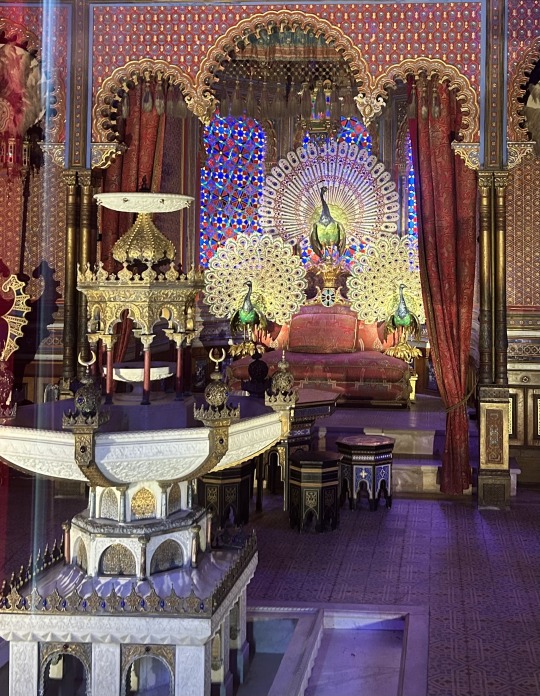
View On WordPress
#Absolutismus#Gärten#Gartenträume#individuelle Mythologien#König#Linderhof#Ludwig II.#Richard Wagner
4 notes
·
View notes
Text

Hôtel de Ville, Paris, France 🇫🇷 by @lesfacadesdeparis
Since 1357, the Hôtel de Ville de Paris has been the seat of the Parisian municipality. The current building, in neo-renaissance style, was rebuilt by the architects Théodore Ballu and Edouard Deperthes on the site of the former Hôtel de Ville, which burned down during the Paris Commune in 1871. Guided tours, by reservation, are organized by the Protocol Department. The visitor discovers in particular the Salle des Fêtes, designed as a replica of the Hall of Mirrors at Versailles. Large free exhibitions are also organized and meet with great success.
17 notes
·
View notes
Text
Hi there!
This account is run by Special Containment Database ( @specialcontainmentdatabase ), and is primarily ran at the moment by Branzy/Lex/Versailles (It/Xe/Neos/He) (@wolfishrabbit). We primarily will be putting original universe works here, but there will also be occasional fandom related works posted (typically in the form of an ao3 link). We will also reblog writing related posts and writing prompts!
We typically write sci-fi, hurt/comfort, and varying levels of fantasy. Tags for any series will be tagged when they are made.
My list of my main ocs for ask games is here.
SORTING TAGS
#rb; - The general 'Reblog' tag. Will be used a lot, feel free to filter out.
#curators journal - Non-reblog posts! Essentially original posts of mine.
#notices on the billboard - Posts I view to be important, and that need to be tagged separately.
#motivational guides - Positivity/Uplifting posts
#how-to books - Guides and tips on writing & character building
#book list - Book and Fic recommendations
#cobwebs in the corner - Webweaves
#cafe chatter - Misc posts, including character building and some non-writing posts.
#the mailbox - Askbox stuff!
#into the archives - Fanwork stuff!
#the writers pen - Non-fandom writing
#questions corner - Ask Game Tag :3
CONTENT RELATED TAGS
(there are more ocs/worlds/aus just!!!)
OC TAGS
#oc: vivienne -> #auoc: vivienne
#oc: mortis
#oc: apollo
#oc: artie
#oc: maxwell -> #auoc: maxwell
#oc: firefly
WORLD TAGS
#world: terra
#world: nightsky
AU TAGS
#au: delayed possession
#au: midnight dance
#au: cape sundew
I don't tag warnings most of the time? But if you're a mutual feel free to ask for something to be added.



4 notes
·
View notes
Text

Annual haute culture approximation tour:: person, close up, skinkini, dramatic lighting, cg society, digital art, fantasy art, cat, photo realistic, feminine subject, cyberpunk, David LaChapelle, fashion show, pop surrealism, collage, two women, Masamune Shirow, zbrush central, afrofuturism, orange, concept photoset, Kim Kardashian, Beyonce, Madison Beer, Leeloo, full body shot, 4K, ceramic cyborg, cyberpunk photo, y2k aesthetic, neo-dada, cyborg, Vivienne Westwood, Versailles, medium format camera, Kodachrome, cat, David LaChapelle, Tumblr, pop surrealism, perfect android girl family, four legs, Ariana Grande meaning Sithful, Kim Deuk-sin, body:: knight in shining armor::-0.2 bright , 85mm lens, f/2.4 dramatic lighting - 85mm f/2.4 , shallow depth of field, high definition 8k --ar 2:3 --c 21
Aargoldsmith
midjourney
12 notes
·
View notes